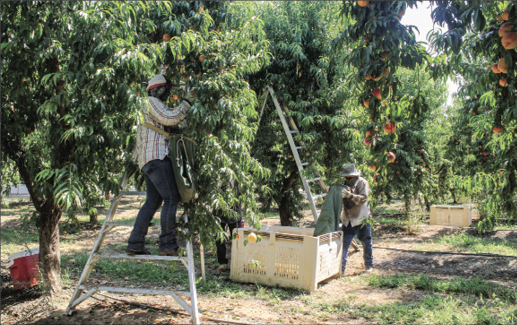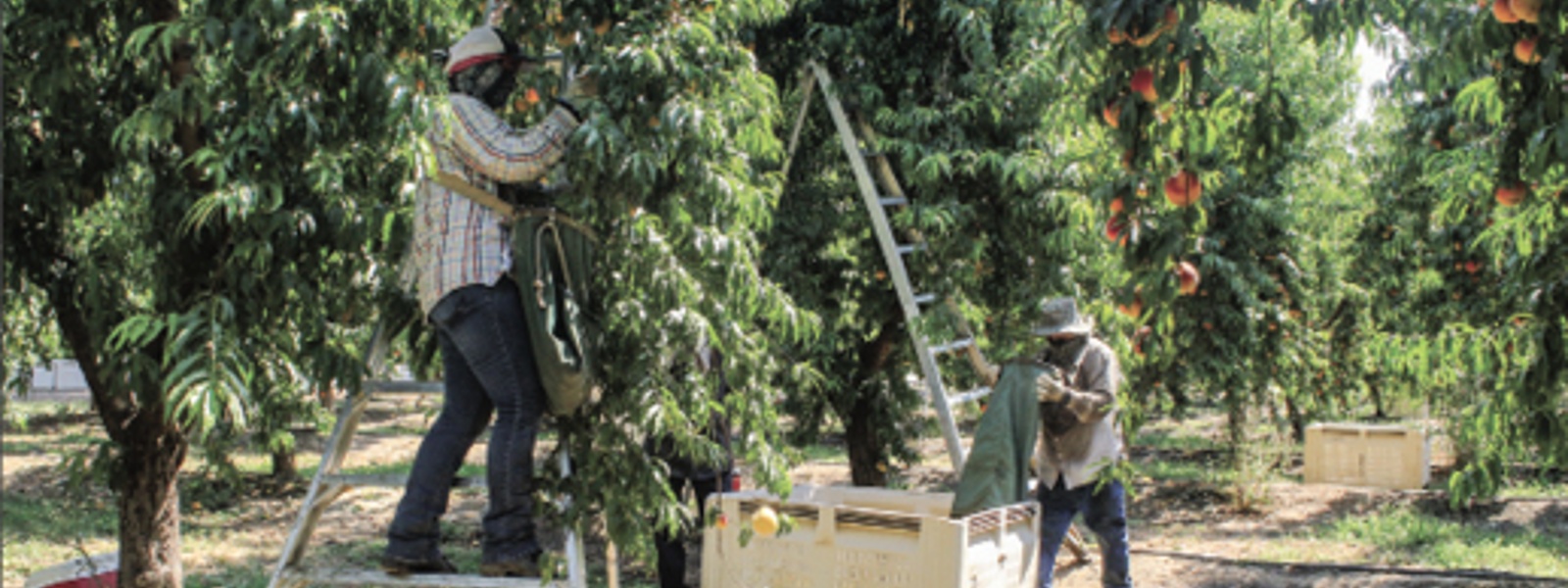Shorter crop lifts prices for cling peaches


By Ching Lee
Buoyed by increased demand and a lighter crop, California cling peaches might as well be gold this year, with state canneries clamoring for fruit—and paying record prices for it.
Dwindling state acreage already tightened supplies in recent years. This year, damage from the spring frost further reduced the crop, with growers on pace to deliver their second-lowest yield per acre in the past 30 years, said Rich Hudgins, president and CEO of the California Canning Peach Association.
“With the crop that we have out there for 2022, we’re actually going to be somewhat short of underlying market demand,” he said.
The shortage comes as canned foods such as peaches have enjoyed a renaissance of sorts. Since the early days of the pandemic lockdown, sales of shelf-stable goods have surged—and the trend appears to be holding. Various market reports project growth in the sector during the next few years.
“That’s part of the frustration,” Hudgins said, noting that growers knew there would be demand for every peach they could grow this year, “but Mother Nature had other plans.”
Estimated yield for the 2022 crop is 13.7 tons per acre. That’s down from 15.3 tons per acre in 2021 and the 10-year average of 17 tons, according to the association.
State bearing acreage stands at 13,672, down about 6% from last year and about 57% from 2004.
The reduced volume has forced canners to accept more imperfect and smaller fruit this year “with the goal of trying to make sure that every peach that had an economic value…got delivered,” Hudgins said. Less-pristine peaches could be diced to make products such as fruit cocktail, for example.
“For the first time since I’ve been farming, they’re asking us to send just about everything we can pick,” said Peter Martini, who grows cling peaches in San Joaquin County.
The price for cling peaches has been trending up during the past several years, with growers earning a record $603 a ton this year compared to $518 in 2021 and $497.50 in 2020. The current price represents a 90% increase from the $317 price processors paid 10 years ago, when state acreage was trending down as peach orchards were removed to make way for more-profitable crops such as tree nuts.
The drop in acreage prompted canners in 2014 to offer grower incentives to plant more cling peaches. Growers did, only to see prices fall three years later due to an oversupply. Then came “a period of adjustment,” Hudgins said, with plantings curtailed and trees pulled, though he noted “those days are behind us now.”
Sales of canned peaches are not expected to return to levels seen at the height of the pandemic when people were stocking pantries. But Hudgins said “we are still seeing more retail momentum in the category than we did three years ago.”
Martini, who also grows almonds, said the higher price for cling peaches has helped him “tremendously” at a time when the price for almonds has slipped.
“If I had just almonds right now, life would be pretty challenging,” he said.
With the higher price processors are paying this year, Kulwant Johl, who farms in Yuba County, said it will help cover the increased production costs he faces.
The Yuba-Sutter region accounts for more than 61% of the state’s bearing acreage of cling peaches and suffered the brunt of the frost damage. Johl estimated about 20% of his crop sustained damage, though he said some orchards in his area saw 50% or more damage, with some growers choosing not to pick certain orchards.
Growers agree, however, that the lighter crop has also produced larger fruit sizes.
Despite a strong market and signals to plant more cling peaches, Johl said he plans to maintain his current acreage, planting new trees as he removes old ones.
“We go through the cycles again and again,” he said. “Now (canners) want us to plant.”
Martini said he planted new peaches this year under a 20-year contract with Lodi-based Pacific Coast Producers, one of two remaining canneries left in the state. He noted processors haven’t offered such contracts “in a while,” adding, “that just shows the need that the canners have for peaches.”
Because of the smaller crop this year, Hudgins said more imported fruit is expected to come in to fill market demand. But he said he also believes the need for additional imports will disappear next year if state production improves.
Uncertainty about the future of U.S. immigration policy remains a key concern for growers deciding whether to plant a new peach orchard, Hudgins said. Labor, he noted, represents 70% of peach growers’ production costs. The productive life of a peach orchard is about 20 years.
“You really need some assurance that you will have a workforce available to you for the next 20 years if you’re going to plant a new orchard,” Hudgins added.
Even though mechanical harvest has been available for years, Fresno County grower Lance Jackson said it remains “pretty rough” on the fruit. That’s why he prefers to have it picked by hand. Hand-harvested fruit, he said, earns him “much better” returns “because we’re losing very little to damage.”
With more fallowed fields due to water shortages and less acreage of peaches and other crops, growers agree labor availability has not been a problem this year. Johl said he has harvesting machines but has not used them this year because “we have plenty of labor.”
To get the quality that processors desire, Jackson said canners would need to continue to pay a high-enough price for hand-picked fruit. At the same time, the market must also be willing to pay “a reasonable price for peaches.” With impacts from the pandemic breathing “new life into all kinds of canned products,” Jackson said he thinks the outlook for cling peaches remains “pretty solid.”
“The idea that people aren’t eating canned fruit is not accurate,” he said. “It’s just people need to eat more American canned fruit.”
(Ching Lee is an assistant editor of Ag Alert. She may be contacted at clee@cfbf.com.)




